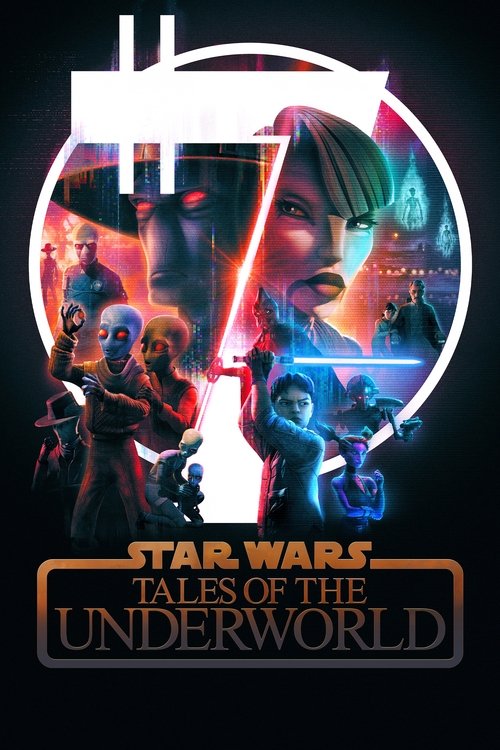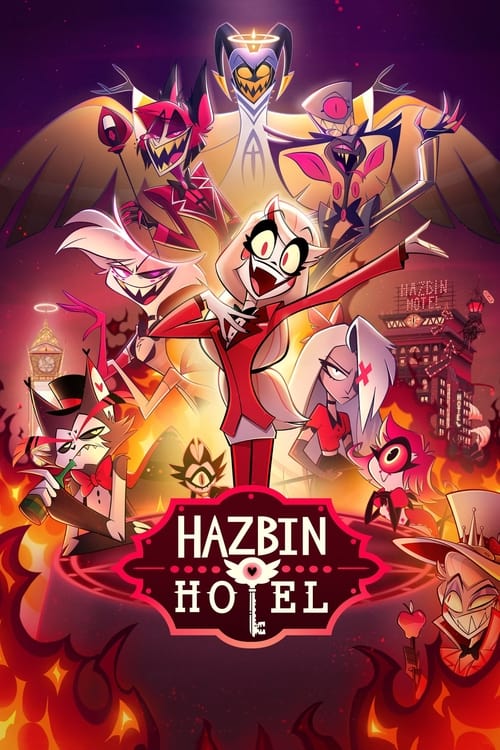
Ask Your Own Question
What is the plot?
The miniseries "Star Wars: Tales of the Underworld" (2025) opens with Asajj Ventress being resurrected through a haunting Nightsister ritual in the mystical caves of Dathomir. She awakens as a broken soul, struggling with the pain of her return and the realization that the galaxy has moved on without her. Her past identities--as a Sith assassin, Nightsister, bounty hunter, and would-be Jedi--are behind her, and she chooses to pursue a quiet, calm life rather than return to her former violent ways.
Ventress soon encounters a young survivor of Order 66, a child who has escaped the Jedi purge. Recognizing the danger the child faces from the Empire, Ventress takes the child under her wing, deciding to protect and guide them. This decision forces her back into the criminal underworld she had hoped to leave behind.
Together, Ventress and the child navigate the galaxy's dangerous underbelly, evading Imperial forces relentlessly hunting Order 66 survivors. Their journey is fraught with close calls and tense escapes, including a sequence where they narrowly avoid capture by Imperial Inquisitors through a combination of stealth and Ventress's combat skills.
At one point, Ventress and her new ally travel to an arid desert planet following intelligence from a contact named Latts. There, they search for the Hidden Path, a rumored secret route used by surviving Separatists and other fugitives. During this sequence, Ventress forms a reluctant but growing friendship with a companion named Lyco, who proves resourceful and knowledgeable about the underworld. They encounter an old Separatist and a group of quirky raiders, which leads to a tense but ultimately successful negotiation and acquisition of vital information about the Hidden Path.
In a daring heist sequence, Ventress and Lyco attempt to steal a critical component used in the construction of Imperial Star Destroyers. The operation involves careful infiltration of a heavily guarded facility, precise timing, and combat against security forces. Ventress's leadership and combat prowess are on full display as they overcome obstacles and escape with the component, further undermining Imperial power.
Parallel to Ventress's story, the miniseries follows Cad Bane, the infamous bounty hunter, who confronts his past when he meets an old friend who has become a Marshal. This reunion is tense and layered with unresolved history. Cad Bane's interactions reveal his internal conflicts and the consequences of his past choices.
Cad Bane's arc includes a confrontation with Imperial forces and bounty hunter rivals, showcasing his tactical genius and ruthless efficiency. He navigates a complex web of alliances and betrayals, ultimately making key decisions that affect his standing in the criminal underworld.
The miniseries concludes with Ventress and her young ward finding a semblance of hope and purpose, having secured a safer path forward through the Hidden Path. Cad Bane's storyline ends with him reaffirming his place in the galaxy's underworld, setting the stage for future conflicts and alliances.
Throughout the miniseries, the animation is noted for its painterly style, detailed textures, and atmospheric lighting, enhancing the mature and intimate tone of the storytelling. The music departs from traditional Star Wars themes, providing a fresh auditory experience that complements the darker, character-driven narrative.
What is the ending?
The ending of Star Wars: Tales of the Underworld Season 1 "Miniseries" in 2025 concludes with Cad Bane killing Niro, a significant figure connected to his past, and being warned to stay away from Niro's son, Isaac. The series closes on Cad Bane's solitary figure, hinting at ongoing conflict and unresolved tensions in his story arc.
Expanding on this ending in a detailed, scene-by-scene narrative:
The final episode centers on Cad Bane confronting his past and the consequences of his choices. The scene opens with Cad Bane tracking down Niro, a man tied to his earlier life and the criminal underworld. The atmosphere is tense and charged with the weight of history between them. Cad Bane's demeanor is cold and resolute as he approaches Niro, who is caught off guard by the encounter.
Without hesitation, Cad Bane kills Niro, an act that underscores his ruthless nature and the dark path he has chosen. This moment is pivotal, marking a definitive break from any lingering ties to his past and signaling his commitment to his own code and survival in the underworld.
Immediately after the killing, a mysterious figure warns Cad Bane to "stay away from him," referring to Niro's son, Isaac. This warning introduces a new layer of complexity and potential future conflict, suggesting that Cad Bane's actions will have repercussions beyond this moment.
The episode closes with Cad Bane standing alone, the weight of his choices evident in his posture and expression. The camera lingers on him, emphasizing his isolation and the ongoing struggle within the criminal underworld. This ending leaves Cad Bane's fate open-ended but firmly rooted in the consequences of his violent decisions.
Regarding other main characters from the miniseries, Asajj Ventress's storyline concludes earlier in the series, where she is seen transitioning away from her assassin past, seeking a new path with a young survivor named Lyco. Her fate is one of cautious hope and tentative alliance, contrasting with Cad Bane's darker trajectory.
In summary, the miniseries ends with Cad Bane's violent act against Niro and a warning about Isaac, setting up future tensions, while Asajj Ventress moves toward redemption and survival in the harsh galaxy. The narrative highlights the divergent paths of these two iconic characters within the criminal underworld of Star Wars.
Is there a post-credit scene?
The TV miniseries "Star Wars: Tales of the Underworld" (2025) does have a notable post-credit scene. It occurs at the end of the final episode, which focuses on Cad Bane's backstory and his emotional arc. The last scene is described as tense and emotional, well-directed and animated, serving as a powerful conclusion to Bane's storyline and the series overall.
This post-credit scene highlights the culmination of Cad Bane's journey, showing the consequences of his choices and the complex relationship with his side character Nero. It leaves a strong emotional impact, emphasizing the tragic nature of Bane's fate and the thematic contrast between the characters' paths.
No further detailed description of the exact content of the post-credit scene is available in the search results, but it is clear that it is a significant and memorable moment that ties together the narrative threads of the miniseries.
What are the backgrounds and motivations of the main characters Asajj Ventress and Cad Bane in Star Wars: Tales of the Underworld?
Asajj Ventress is portrayed as a former assassin who is fleeing with a new ally, though the series does not deeply expand on her character since much has been covered in other stories. Cad Bane confronts his past when meeting an old friend turned Marshal, with the series attempting to develop his history into something tragic, but it leaves some motivations unexplored, focusing more on emotional weight and character depth rather than full backstory details.
How does the series depict the criminal underworld and the setting of the city where the story takes place?
The series follows the galaxy's criminal underworld and shows efforts to improve the city where the episodes take place, highlighting a rare depiction of a city trying to better itself independently of the Republic or Empire. This is shown through subtle details like a park with children playing, symbolizing progress. However, the series also touches on the complexities of law enforcement, implying improvements are linked to a strong police force, while acknowledging the problematic aspects of policing.
What are some notable story elements or scenes involving Asajj Ventress and her new ally?
One notable story element is a heist executed by Ventress and her new ally Lyco, which becomes increasingly chaotic and creative as it progresses. This sequence is highlighted for its dynamic action and clever storytelling, contributing to the thematic duality of the season and elevating the overall experience.
How does the series explore Cad Bane's relationship with his old friend turned Marshal?
Cad Bane's storyline involves confronting his past through his interactions with an old friend who has become a Marshal. This relationship adds emotional depth and explores themes of loyalty and change, though the series does not fully delve into Bane's motivations, leaving some aspects of his character arc less developed compared to other characters.
What thematic contrasts or dualities are present in the storytelling of Star Wars: Tales of the Underworld?
The series presents a thematic duality between the two parts of the season, focusing on different characters and their perspectives within the criminal underworld. This duality is reflected in the tone, character development, and narrative structure, providing a mature and atmospheric glimpse into the darker corners of the galaxy while balancing action and emotional storytelling.
Is this family friendly?
Star Wars: Tales of the Underworld (2025) is rated TV-PG, indicating it is generally suitable for a family audience but may contain some material parents might consider inappropriate for younger children. The series features action, adventure, and science fiction elements centered on two iconic villains, Asajj Ventress and Cad Bane, with themes of personal struggle, redemption, and complex emotional journeys.
Potentially objectionable or upsetting aspects for children or sensitive viewers include:
- Violence and action scenes involving bounty hunters and assassins, including combat and chase sequences typical of Star Wars underworld settings.
- Dark and mature themes such as regret, fear, confusion, and redemption, which are explored in a psychologically rich and intimate manner.
- Emotional intensity related to characters' internal conflicts and moral ambiguity, which might be unsettling for very young or sensitive viewers.
The show does not appear to contain explicit content or graphic violence but maintains a tone that is more mature and nuanced than typical children's animation, focusing on flawed characters and their difficult choices. Parents may want to consider the emotional complexity and some action violence when deciding if it is appropriate for younger children.















